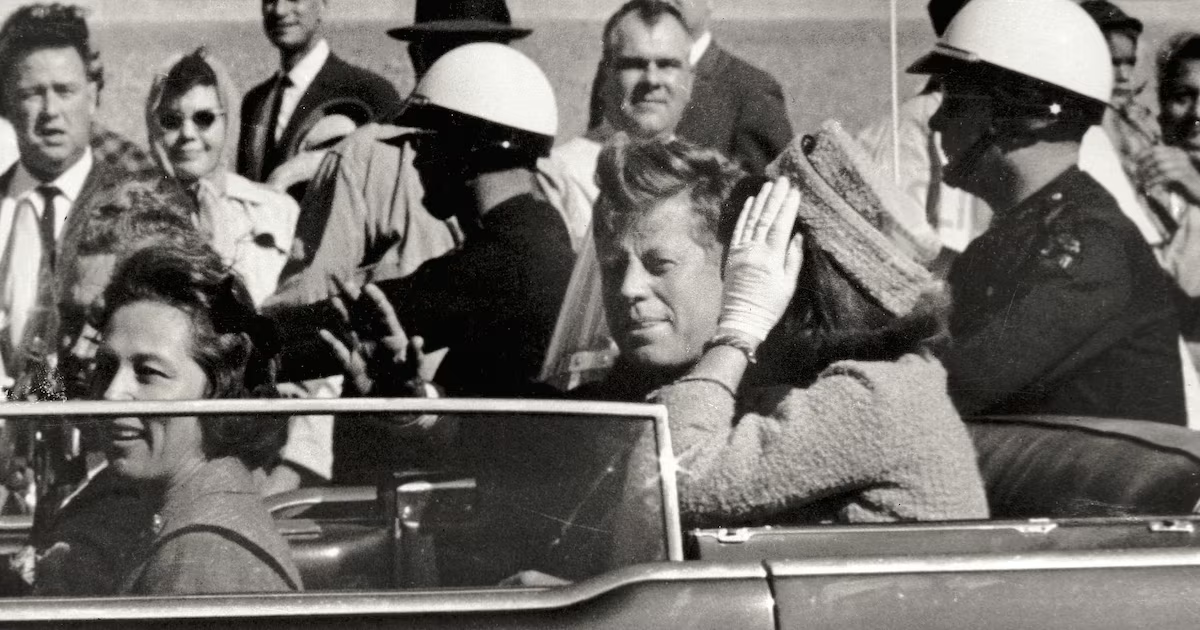6 ways to learn about JFK on the 62nd anniversary of his assassination

It’s been 62 years since the assassination of President John F. Kennedy, and the event still looms large in Dallas. In fact, The Dallas Morning News has documented the Kennedy assassination more thoroughly than any other single event in the paper’s history.
On Nov. 22, 1963, after a breakfast in Fort Worth and a short flight to Love Field, Kennedy traveled through downtown on his way to a luncheon at the Dallas Trade Mart.
His motorcade reached Dealey Plaza and was driving past the Texas School Book Depository at 12:30 p.m. when he was shot by a sniper. He was pronounced dead at Parkland Hospital just over an hour later.
Related
News Roundups
Government investigations concluded that Lee Harvey Oswald shot Kennedy from a sixth-floor window on the depository building’s southeastern corner.
The event is still fresh in the minds of many who lived through it. But as the decades pass, that number dwindles. Here are some ways to learn about JFK on the 62nd anniversary of his killing.
Related
The National Archives
The National Archives in Washington, D.C., maintains an exhaustive collection of documents related to the Kennedy assassination, with more than 6 million pages of records, photographs, motion pictures, sound recordings and artifacts. A number of previously classified documents were added to the trove this year after President Donald Trump in March directed that they be released.
A man takes a photo of the Sixth Floor Museum window where President John F. Kennedy was assassinated from at Dealey Plaza in downtown Dallas. The building was known as the Texas School Book Depository at the time of the assassination.
Juan Figueroa / Staff Photographer
Visiting the site
The area immediately around Dealey Plaza still looks much the same today as it did when Kennedy’s motorcade turned down Elm Street on his fateful final journey. Visitors can often be seen lounging on the Grassy Knoll, near where Abraham Zapruder famously filmed the president’s killing, and taking pictures of two X’s that mark the spots in the street where Lee Harvey Oswald’s bullets struck Kennedy.
The Texas School Book Depository has been turned into the Sixth Floor Museum at Dealey Plaza, with a collection that examines the life, death and legacy of the 35th president.
Reading contemporary coverage
A newspaper front page is often considered the first draft of history. By reading contemporary reports, we can learn how the information was conveyed at the time. As The Dallas Morning News marked its 140th anniversary this year, readers overwhelmingly voted for the Nov. 23, 1963, front page — with its banner headline “Kennedy slain on Dallas street” — as the most significant in the newspaper’s history.
The News maintains a site where you can read the front page, as well as view eyewitness accounts, the Zapruder film and more.
The Nov. 23, 1963, issue of The Dallas Morning News shows how the killing of President John F. Kennedy was covered at the time.
Evans Caglage / Staff Photographer
Related
Dallas Public Library
The J. Erik Jonsson Central Library of the Dallas Public Library holds a significant collection of materials related to the Kennedy assassination. The library maintains a searchable archive online with photos, oral histories and more. The physical documents can be accessed by appointment at the library, generally through microfilm or photocopied versions to protect the fragile originals.
Related
Texas Theatre screenings
The Texas Theatre, where Oswald was arrested on suspicion of killing Kennedy as well as Dallas police Officer J.D. Tippit, is showing the same movies on Nov. 22 that it was showing on the day Kennedy was killed, at the exact same times and ticket prices as it did on Nov. 22, 1963. The 1961 film War is Hell — the movie that Oswald was watching when he was arrested — will be shown at 1:20 p.m., followed at 2:45 p.m. by the 1963 film Cry of Battle. A ticket for either film will set you back 90 cents.
JFK Presidential Library
The John F. Kennedy Presidential Library and Museum in Boston has a vast collection of photos, documents and other items related to the life and legacy of the former president. It even has an “Ask an Archivist” feature, where visitors to the library’s website can submit their queries.





